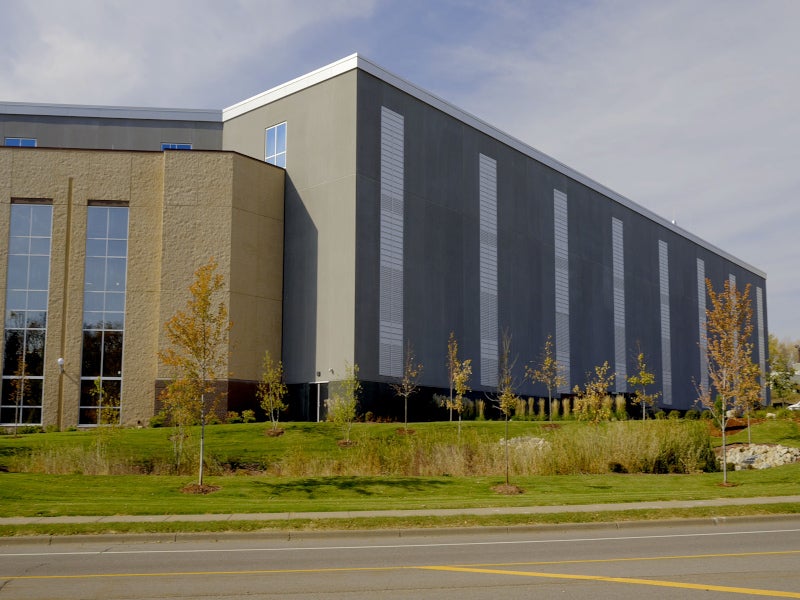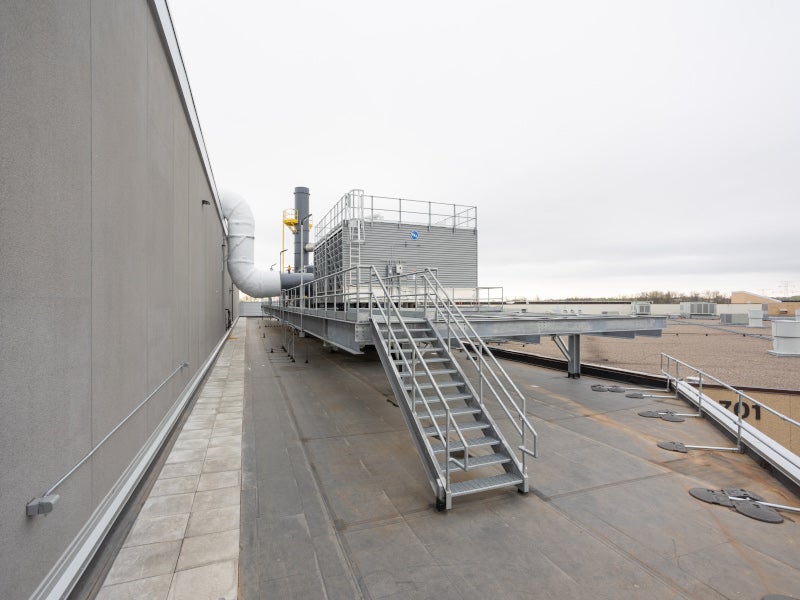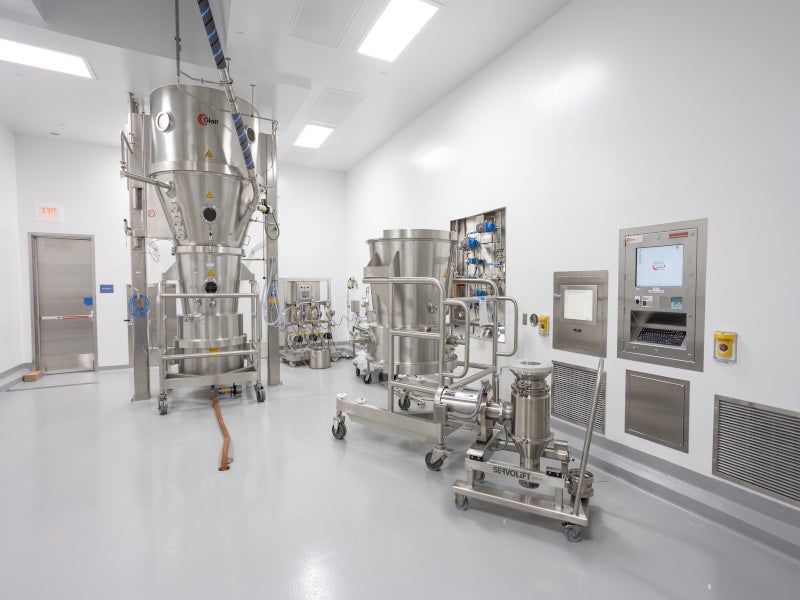US-based pharmaceutical company Upsher-Smith Laboratories opened a new facility known as Plant C in Maple Grove, Minnesota, US, to expand its manufacturing capabilities, in February 2023.
The facility has increased the capacity for packaging, distribution, logistics, and warehousing of the company’s products, which include more than 150 branded and generic products. It also offers serialisation and supports contract manufacturing for third parties by offering end-to-end supply chain solutions.
Constructed with a $100m investment, the facility allowed the company to close its old facility in Denver in March 2023 while the operations at the company’s Plymouth site are expected to be merged into the new facility in the long term.
Upsher-Smiths’ new manufacturing facility development
Plant C is a state-of-the-art greenfield manufacturing facility that was built on a 270,000ft² area. It offers granulation capabilities that include solvent processing, compression, blending, coding, and packaging of products in bottles, blisters, sachets, or pouches.
The facility was built in three phases. The first phase included the construction and qualification of the building, as well as the transfer of production from the Denver facility.
The second phase of the project included the relocation of all packaging activities from Plymouth to Maple Grove. The third phase concluded with the final production transfer of all products, including Upsher-Smith Laboratories’ oral solid dosage (OSD) portfolio such as tablets, capsules, and powders, as well as the external development projects that the company was working on with other partners and contract manufacturing opportunities.
Plant C design and features
Plant C provides manufacturing and packaging capabilities for solid oral doses; unit dose blisters; unit dose liquid in cups; liquid in bottles; powder filling in sachets, bottles, and cans; and contract packaging.
The facility’s outbound packaging configurations are compiled according to the pending Drug Supply Chain Security Act (DSCSA) conformance standards.
Plant C is equipped with a process control system (PCS) and dedicated spaces for solvent dispensing, wash-in-place, fluid bed, and weighing and dispensing.
The PCS controls centralised batch recipes and data archiving for industrial waste, wash-in-place, post-blenders, solvent dispensing, solution preparations, solution mixing, and solvent utility. The equipment settings are controlled by touch-screen controls for digital operations management.
Electronic batch records (EBR) eliminate manual entry of data into paper batch records, lowering the error possibility.
Solvents are dispensed in the solutions prep room to accommodate both solvents and aqueous-based products. The solvent dispensing room allows dispensing of solvents into various manufacturing rooms, such as the coating room and fluid bed area. This facilitates careful handling of solvent-based products as they are combustible and can cause environmental hazards.
The wash-in-place area facilitates the cleaning of the process equipment by an automated cleaning system, improving cleaning efficiency without relocating the equipment. They can be dosed with up to three different detergents to facilitate the cleaning of difficult-to-clean products.
The area also includes two fluid bed processors, a high-shear granulator, and a coating pan for blending, granulating, drying, pelletising, and coating applications. It also has additional space to accommodate more systems in the future.
Plant C has a dedicated weighing and dispensing room, which is the largest of the four weighing and dispensing rooms in the plant. The room controls dust and mitigates any product contamination. It has a large laminar flow hood housing a vacuum transfer station to transfer materials from drums into totes, allowing products to be weighed and moved to the next step in the process.
Glatt GPCG 300 fluidised bed system details
Plant C has a Glatt GPCG 300 fluidised bed system, which encompasses the Fluid Bed room, extends through the ceiling above and the floor below, the solution prep room two floors below and the additional equipment behind the Fluid Bed room.
It enables bottom and top spray granulation, as well as drying. The system is dedicated to a single repatriation product from one of the partner contract manufacturing organisations (CMOs) and is scalable with the company’s Fluid Bed units.
The operation in the Fluid Bed system begins with the loading of the machine tower with powder or powder granules, followed by spraying of the solution into the system to begin the coating process.
The bottom dump discharge eliminates the need to open the system, and a perforated screen descends to allow the product to fall into storage silos on the floor below. The system is closed once the product reaches the storage silo and the next batch starts.
The system is rated for flammable solutions, makes less noise due to its closed nature and does not require extended downtime for cleaning.
Sustainable features of Plant C
Plant C incorporates several resource-efficient design features. LED lighting with automated lighting schedules enables energy conservation, while automatic faucets and water closets allow water conservation in the plant. It has variable speed drives on pumps and motors that may be adjusted to satisfy the requirements of the application.
The plant is equipped with on-demand utilities such as a home vacuum and local exhaust systems. It has rooms with unoccupied setbacks when they are not used and wash-in-place systems that reduce the need for multiple cleanings.
The Ecogate systems are installed into the dust collecting systems to minimise noise and improve air quality and energy consumption.
The process air emissions are regulated by a regenerative thermal oxidiser (RTO), which is designed to eliminate more than 98% of the volatile organic compounds generated by solvent process exhaust systems.
The facility is fitted with an automated process wastewater treatment system to maintain its strong record of compliance with the industrial wastewater discharge permit. It also includes charging stations for electric vehicles.
Plant C is integrated with multiple layers of protection and preventative measures, including nitrogen blanketing, explosive venting, and expulsion suppression for solvent processing.






